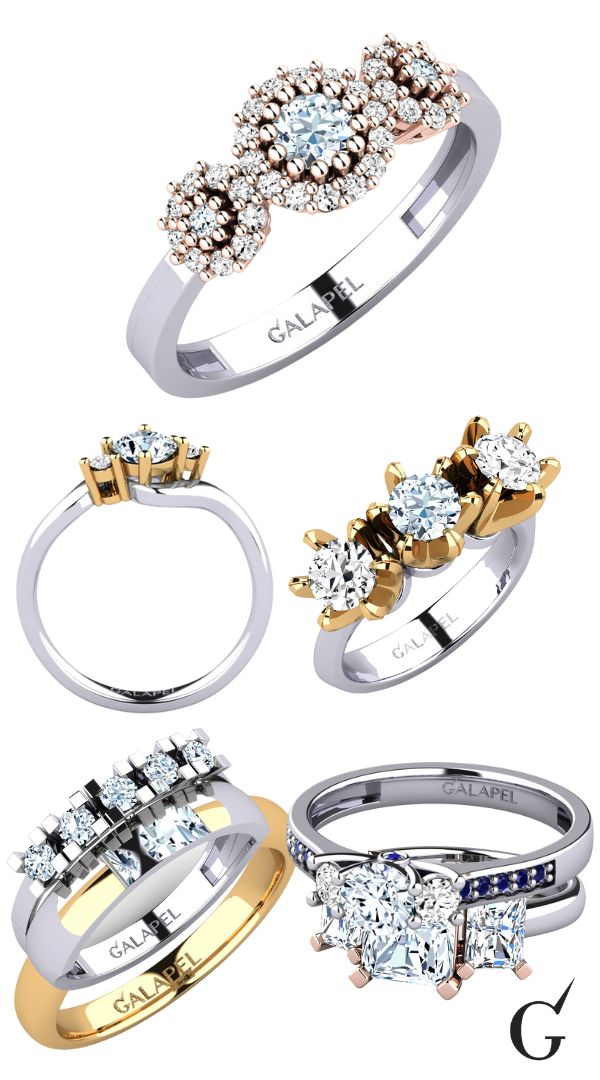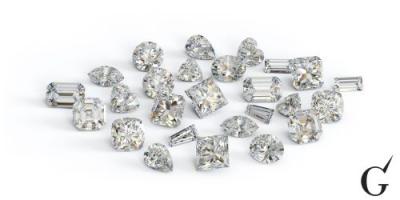The History and Symbolism of Engagement Rings: A Comprehensive Guide
Table of Contents
Introduction
Engagement rings have long been a symbol of love, commitment, and the promise of a shared future. But have you ever wondered how this tradition started? Or what the ring truly symbolizes? This article aims to unravel the history and symbolism of engagement rings, offering insights that may help you appreciate this cherished tradition even more.
The Historical Journey of Engagement Rings
Ancient Beginnings
 The concept of using rings as a symbol of commitment dates back to ancient times. The Egyptians are credited with the concept of using rings as a symbol of eternal love. Archaeologists have found rings made of various materials, including leather and braided hemp, on mummies dating back over 3000 years.
The concept of using rings as a symbol of commitment dates back to ancient times. The Egyptians are credited with the concept of using rings as a symbol of eternal love. Archaeologists have found rings made of various materials, including leather and braided hemp, on mummies dating back over 3000 years.
Roman Influence
In ancient Rome, the giving of a ring was a public pledge that a contract of a future union would be honored. The groom would give the bride a gold ring to wear for the ceremony and for special events, then she would wear an iron ring at home, symbolizing her binding legal agreement to his ownership of her.
The Middle Ages
During medieval times, the Christians adapted the rings, adding more overtly religious symbolism. The Christians used the ring as a symbol of the union of hearts.
The Diamond Era
The first recorded use of a diamond engagement ring was in 1477 when Archduke Maximilian of Austria proposed to Mary of Burgundy. This started a trend among European nobility, which eventually spread worldwide, thanks to aggressive marketing campaigns by diamond companies in the 20th century.
Symbolism Behind the Ring
The Circle
The circle has no end, symbolizing eternal love and commitment. This is why the ring, a circle, is the perfect symbol to represent marriage.
The Center Stone
The center stone, often a diamond, symbolizes the enduring and unbreakable force of love. Diamonds are the hardest known substance, which makes them an apt metaphor for enduring love.
The Setting
The setting of the ring, whether simple or elaborate, holds the diamond in place, just as a relationship nurtures and supports love.
Types of Engagement Ring Settings
Solitaire Setting
The solitaire setting is perhaps the most classic and timeless. It features a single diamond set in a simple band, allowing the stone to be the focal point.
Halo Setting
The halo setting features a center stone surrounded by smaller diamonds, creating a "halo" effect. This setting can make the center stone appear larger and more brilliant.
Three-Stone Setting
The three-stone setting features a larger center stone flanked by two smaller stones. This setting is often symbolic, representing a couple's past, present, and future.
Vintage Setting
Vintage settings are inspired by different historical periods and often feature intricate designs, milgrain detailing, and other ornate features.
Types of Metals Used in Engagement Rings
Gold
Gold is a traditional choice and comes in various colors, including yellow, white, and rose. Each type has its unique properties and aesthetic appeal.
Platinum
Platinum is a white metal known for its durability and resistance to tarnish and corrosion. It's also hypoallergenic, making it a good choice for those with sensitive skin.
Silver
Silver is less commonly used for engagement rings due to its susceptibility to tarnish and scratches. However, it's an affordable option and can be a good choice for those on a budget.
Factors Affecting the Price of Engagement Rings
When it comes to the price of an engagement ring, several factors can significantly affect the final cost. Understanding these can help you make a more informed decision that fits your budget.
The 4 Cs
The 4 Cs—Cut, Clarity, Color, and Carat—play a significant role in determining the price of the diamond. A well-cut diamond will reflect light beautifully, clarity refers to the absence of imperfections, color grades the diamond's hue, and carat refers to the diamond's size.
Type of Metal
The choice of metal can also impact the cost. Platinum rings are generally more expensive than 14k or 18k gold rings.
Setting Complexity
The complexity of the setting can also affect the price. A solitaire ring with side stones or intricate designs will generally be more expensive than a simple solitaire ring.
Brand and Certification
The brand name and any accompanying certifications can also add to the cost. Certified, ethically-sourced diamonds from reputable brands are generally more expensive.
Care and Maintenance of Your Engagement Ring
Cleaning
Regular cleaning can keep your ring sparkling. A simple solution of warm water and mild dish soap can be effective. Soak the ring for about 20-30 minutes and then gently scrub it with a soft toothbrush.
Safe Storage
When not wearing your ring, it's best to store it in a fabric-lined jewelry box, away from other pieces to avoid scratches. Some people opt for a ring holder, specifically designed to hold engagement rings.
Professional Check-up
It's advisable to have your ring checked by a professional at least once a year to ensure that the setting is secure and that there are no loose stones.
Conclusion
Engagement rings have a rich history and deep symbolism that adds to the beauty and significance of this cherished tradition. Whether you prefer a classic solitaire, a vibrant gemstone, or a custom-designed ring, the most important thing is the love and commitment it represents. As you slip that ring onto your loved one's finger, you become a part of a tradition that has been celebrated through the ages, and that is truly something special. Understanding the various factors that contribute to the ring's design, cost, and maintenance can help you make an informed decision that suits both your budget and your aesthetic preferences. After all, an engagement ring is not just a piece of jewelry; it's a symbol of your shared future and a testament to your love. So, choose wisely and take good care of it, as it's a treasure that will hopefully be passed down through generations.











